#ammi visnaga
Explore tagged Tumblr posts
Text


2 notes
·
View notes
Text
Ammi Visnaga (Khella) Herb Versus Cromolyn, Nalcrom, Gastrocrom For Mastocytosis, Mast Cell Activation Syndrome, Histamine Intolerance, Dermatographic Urticaria, Ulcerative Colitis
HERB KHELLA BENEFITS Latin name : Ammi visnaga Distilled part: seeds Origin : Morocco Properties: antiallergic, anticoagulant, preventive antihistamine (prevents the degranulation of mast cells), antispasmodic, bronchodilator and coronary dilator Indications: allergies, allergic rhinitis, hay fever, asthma, hepatic and renal colic, inflammatory colitis…
#Ammi Visnaga#Cromolyn#Dermatographic Urticaria#Gastrocrom#histamine intolerance#Khella#mast cell activation syndrome#mastocytosis#Nalcrom
0 notes
Text
Elevate Your Aromatherapy Experience with Stillpoint Aromatics Essential Oils
Aromatherapy is an age-old practice that has been celebrated for its ability to heal, relax, and rejuvenate both the mind and body. At the heart of this practice lies the quality of essential oils used. When it comes to finding the finest, therapeutic-grade oils, Stillpoint Aromatics Essential Oils stand out as the gold standard.
1 note
·
View note
Text
Seeds Purchased from Stonecrop Gardens, NY
One of the biggest benefits of membership at Stonecrop is access to their amazing seed bank. Members can purchase rare seeds for $1 a pack. These are plants that are sometimes extremely difficult to find at nurseries and that work perfectly for my area. Here is a list of what I purchased from them...some I've already begun.
The seed collection got suddenly a lot more interesting.
Rarium: Centaurea macrocephala
Rarium: Digitalis parviflora
Rarium: Echinops exaltatus
Rarium: Hosta sieboldiana var. elegans
Rarium: Polygonatum giganteum
Rarium: Salvia coccinea 'Brenthu
Seminum: Acmella oleraceae
Seminum: Actaea japonica (syn. Cimicifuga japonica)
Seminum: Actaea racemosa (syn. Cimicifuga racemosa)
Seminum: Actaea simplex 'Brunette' (syn. Cimicifuga ramosa 'Brunette'
Seminum: Agastache foeniculum 'Alba'
Seminum: Allium angulosum
Seminum: Allium tuberosum
Seminum: Amaranthus hybridus var. erythrostachys
Seminum: Ammi visnaga
Seminum: Anemone virginiana
Seminum: Anethum graveolens
Seminum: Angelica gigas
Seminum: Anthriscus sylvestris 'Raven's Wing'
Seminum: Aster tataricus
Seminum: Astilboides tabularis (syn. Rodgersia tabularis)
Seminum: Astrantia major
Seminum: Calendula officinalis
Seminum: Campanula takesimana 'Alba'
Seminum: Cuphea viscosissima
Seminum: Cynoglossum amabile ‘Firmament’
Seminum: Emilia coccinea
Seminum: Helleborus orientalis
Seminum: Ipomoea lobata (syn. Mina lobata)
Seminum: Monarda punctata
Seminum: Nigella damascena 'Miss Jekyll Blue'
Seminum: Papaver somniferum Mix
Seminum: Salvia farinacea
Seminum: Verbena bonariensis

Anemone virginiana. Interesting thing about this plant is that for years I've pulled it thinking it was a weed. On the years that I forgot to pull it, I was like, man that is pretty! So I now leave it alone. It's drought tolerant and the flowers are loved by pollinators. I'll be planting some more from seed as well.

Anethum graveolens - Dill
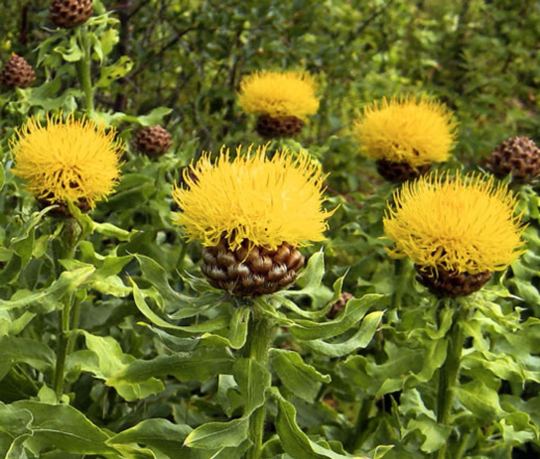
Centaurea macrocephala - Started Seeds 5/3/2024 - This plant is too cool for school!
Category: Rarium | Sub-Category: Perennials for Sun
Scientific Name (Genus/Species): Centaurea macrocephala
Family: (Asteraceae)
(P) to 3′. Great Golden Knapweed. Caucasus. A large, leafy, robust plant bearing sturdy stems topped with incredible, rich golden yellow, hemispherical, thistle-like blooms. The fringed, rusty brown coloured involucre of bracts is very prominent and persists. Midsummer. Makes excellent dried cut flowers. Sun. 3, D & T2

Digitalis parviflora - Started seeds 5/3/2024 - Really different foxglove. Love it.
Category: Rarium | Sub-Category: Perennials for Sun
Scientific Name (Genus/Species): Digitalis parviflora
Family: (Plantaginaceae)
(P) to 2′. Spanish Foxglove. This is a true perennial species of Foxglove, native to the mountains of northern Spain. Plants form a rosette of dark, deeply veined, green leaves bearing in early summer, tightly packed spikes of small, rusty orange-red to chocolate brown flowers on stiff, leafy, upright stems. Eye-catching. Well-drained soil. Sun. 4 & T2

Echinops exaltatus
Category: Rarium | Sub-Category: Perennials for Sun
Scientific Name (Genus/Species): Echinops exaltatus
Family: (Asteraceae)
(P) to 6′. Tall Globe Thistle. Eastern Europe to Russia. Globular flowerheads composed of numerous, tiny, pale blue florets. Flowerheads to 2-½ inches in diameter stand tall on sturdy, downy-white stems and mature into dense, prickly seedheads. The bold, greyish green, thistle-like foliage forms an impressive clump. This summer-to-fall bloomer is a magnet for bees, hoverflies and butterflies. Sun. 4 & T2
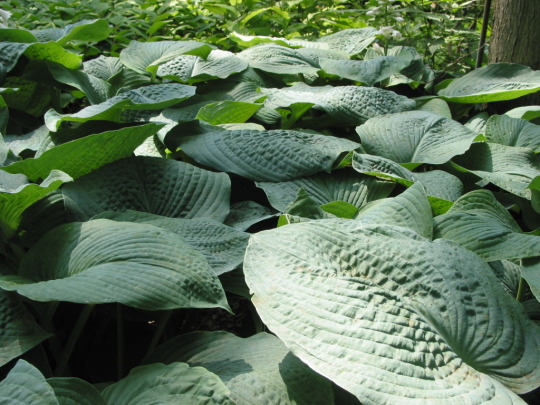
Hosta sieboldiana var. elegans
Category: Rarium | Sub-Category: Woodland
Scientific Name (Genus/Species): Hosta sieboldiana var. elegans
Family: (Asparagaceae)
(P) to 3′. “…most sumptuous of all the Hostas.” (GST**). Huge, broad, glaucous, heavily textured, bluish green leaves form magnificent, stately clumps that add accent and poise to the woodland garden. The pale lilac-white flowers appear in early to midsummer, though they barely emerge from beneath the foliage. 3 & T3, then it may need 40º for 2-3 months.
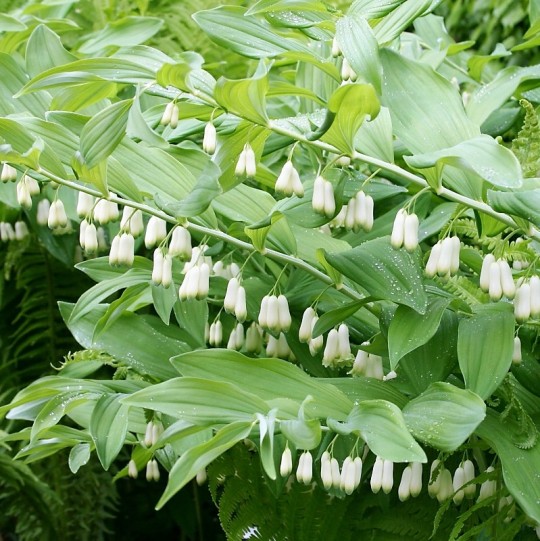
Polygonatum giganteum - Started 5/3/24
Category: Rarium | Sub-Category: Woodland
Scientific Name (Genus/Species): Polygonatum giganteum
Family: (Asparagaceae)
(P) to 7′. Giant Solomon’s Seal. Statuesque and unmistakable. This spectacular giant is similar to Polygonatum biflorum in everything but size. Bell-shaped, greenish white, tubular flowers hang from the tall arching stems in early summer with the dark blue berries following in fall. Moist soil. Shade/partial shade. 3 & 6
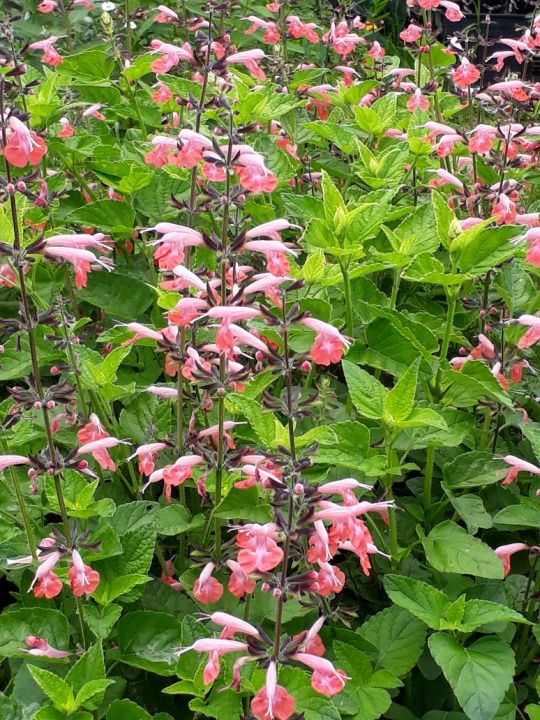
Salvia coccinea 'Brenthurst'
Category: Rarium | Sub-Category: Annuals for Sun
Scientific Name (Genus/Species): Salvia coccinea 'Brenthurst'
Family: Lamiaceae
(A/TP) to 2.5′. A cool-coloured cousin of the red bedding Salvia with numerous spikes of bicoloured, lipped blooms. The pale whitish pink upper hoods and three lobed, deeper pink lower lips contrast nicely against the dark tinted calyces and stems. Blooms late summer and lasts until frost. Sun. 4 & T2

Acmella oleraceae - Toothache Plant
Category: Seminum | Sub-Category: Annuals for Sun
Scientific Name (Genus/Species): Acmella oleraceae
Family: (Asteraceae)
(A) to 10″. Toothache Plant. South America. A profusion of rounded, orange-yellow disc florets with brownish red centres resemble eyeballs. Creeping, bronze-green foliage has numbing properties when chewed, hence the common name. Easy to grow. Very unusual and fun; a “must have”. Summer blooming. Sun. 3 & 6
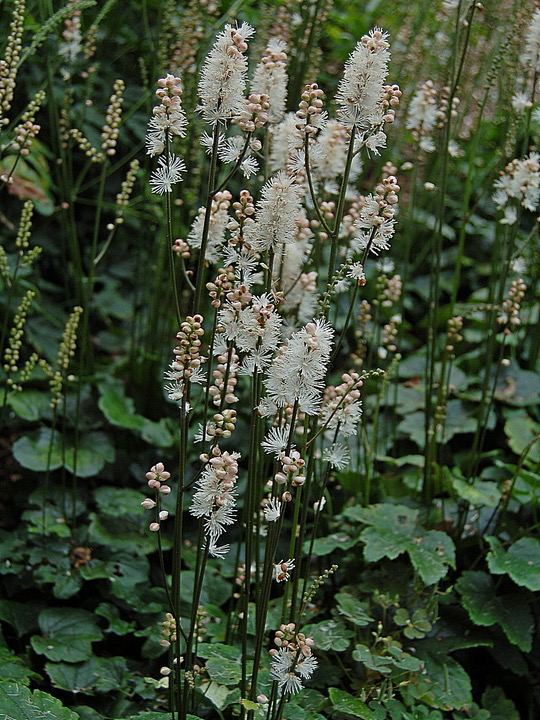
Actaea japonica (syn. Cimicifuga japonica) - snakeroot
Category: Rarium | Sub-Category: Woodland
Scientific Name (Genus/Species): Actaea japonica var. acerina (syn. Cimicifuga japonica var. acerina)
Family: (Ranunculaceae)
(P) to 3′. A Japanese native with handsome maple-like foliage that has long, pointed lobes. Slender branched spikes of white, tufted flowers bloom in September and October. Moist soil. Sun/partial shade. 3 & 6A

Actaea racemosa (syn. Cimicifuga racemosa)
Category: Seminum | Sub-Category: Woodland
Scientific Name (Genus/Species): Actaea racemosa (syn. Cimicifuga racemosa)
Family: (Ranunculaceae)
(P) to 6′. Early Snakeroot, Black Cohosh. An eastern North American native with branched wands of white, bottlebrush flowers. Blooms prolifically in June. Light green, divided foliage remains at three feet tall. Partial shade. 3 & 6A
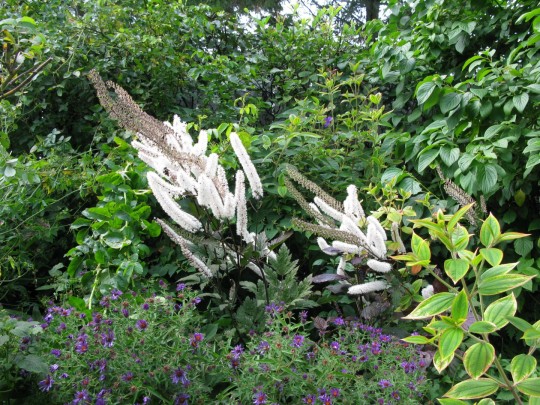
Actaea simplex 'Brunette' (syn. Cimicifuga ramosa 'Brunette')
Category: Seminum | Sub-Category: Woodland
Scientific Name (Genus/Species): Actaea simplex 'Brunette' (syn. Cimicifuga ramosa 'Brunette')
Family: (Ranunculaceae)
(P) to 6′. One of the darkest leaved Cimicifugas. Stems are a rich purplish brown with pure white, upright, fragrant flower spikes in September. Not all seedlings will be as dark as ‘Brunette’, but definitely worth a try. Partial shade. 3 & 6A

Agastache foeniculum 'Alba'
Category: Seminum | Sub-Category: Perennials for Sun
Scientific Name (Genus/Species): Agastache foeniculum 'Alba'
Family: Lamiaceae
Short-lived perennial to 3.5′. White Anise Hyssop. A white cultivar of the above. Sun/partial shade. 4 & T2
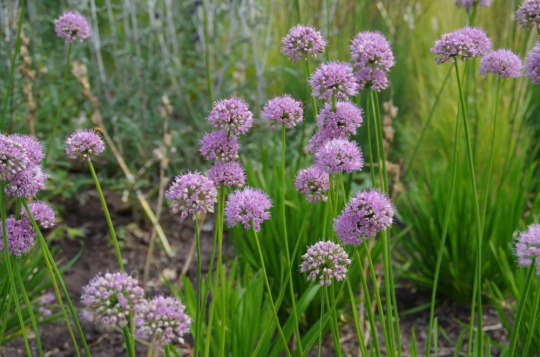
Allium angulosum - mouse garlic
Category: Seminum | Sub-Category: Bulbs
Scientific Name (Genus/Species): Allium angulosum
Family: (Alliaceae)
Hardy bulb to 16″. Mouse Garlic. Europe. Loose heads formed by multiple, cup-shaped flowers of pale purple. Blooms June to August. Sun. 3 & 6
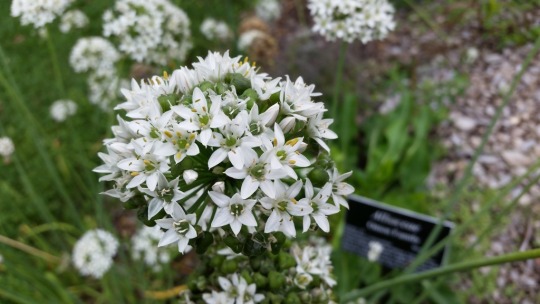
Allium tuberosum - this already grows wild here
Category: Seminum | Sub-Category: Bulbs
Scientific Name (Genus/Species): Allium tuberosum
Family: (Alliaceae)
Hardy bulb to 18″. Garlic Chives. Southeast Asia. Spherical, white blooms freshen the flower garden throughout August. Sun/partial shade. 3 & 6
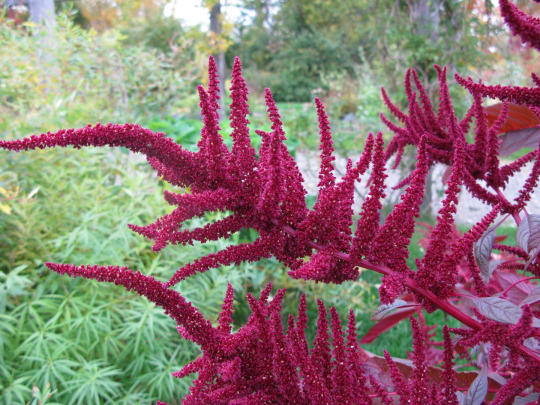
Amaranthus hybridus var. erythrostachys
Category: Seminum | Sub-Category: Annuals for Sun
Scientific Name (Genus/Species): Amaranthus hybridus var. erythrostachys
Family: (Amaranthaceae)
(A) to 5′. Peruvian Tassel Flower. Many branched panicles of crimson, tassel-like flowers accentuated by the deep maroon foliage of this plant, creates drama in the border. Sun. 3 & T3
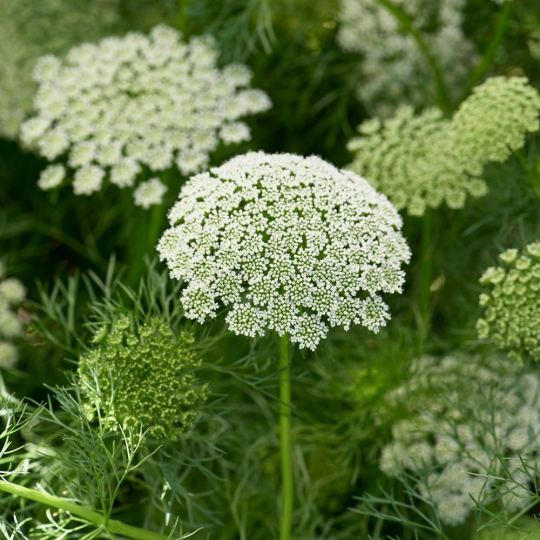
Ammi visnaga - Started Seeds 5/3/2024
Category: Seminum | Sub-Category: Annuals for Sun
Scientific Name (Genus/Species): Ammi visnaga
Family: (Apiaceae)
(A) to 3′. Khella, Toothpick Plant. Egypt. Grown since antiquity for medicinal purposes. This sophisticated Queen Anne’s Lace relative produces masses of feathery, delicate, aromatic foliage topped with wide, compound, flat umbels of tiny, greenish-white flowers. An excellent and unusual filler; most desirable for cut flower displays. Well-drained soil. Sun. 3 & T1
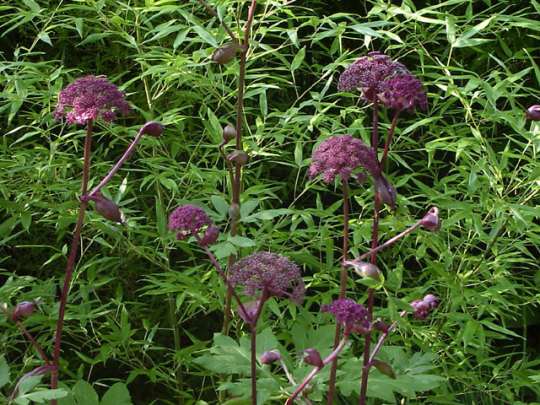
Angelica gigas - Started seeds 5/3/2024
Category: Seminum | Sub-Category: Perennials for Sun
Scientific Name (Genus/Species): Angelica gigas
Family: (Apiaceae)
(B/P) to 5′. This terrific Barry Yinger introduction from Korea and Japan is a stunner. Dramatic, deep maroon, spherical flowerheads emerge from red-flushed, bulbous, leafy sheaths above glossy green, dissected foliage. The afternoon sun intensifies the colour and lends this plant another dimension. Please note, insects, especially hornets, also find it irresistible. Sun/partial shade. 3 & 6
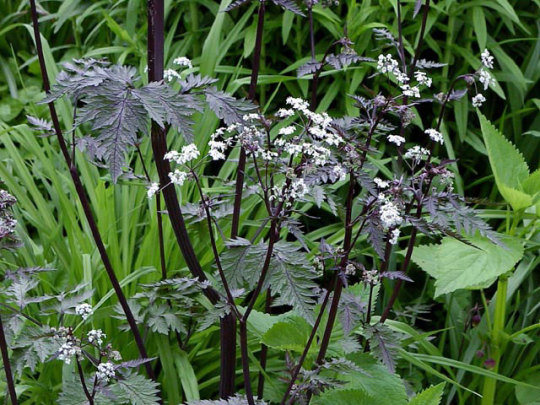
Anthriscus sylvestris 'Raven's Wing'
Category: Seminum | Sub-Category: Perennials for Sun
Scientific Name (Genus/Species): Anthriscus sylvestris 'Raven's Wing'
Family: (Apiaceae)
(B/P) to 5′. Lacey compound umbels of tiny, five-petalled, creamy white flowers, reminiscent of Queen Anne’s Lace, float on hollow, dark stems above fern-like, dusky purple-coloured foliage. Long bloomer that provides an airy elegance to the border. Always admired in our Flower Garden. Self-seeds gently. Sun/partial shade. 3 & 6
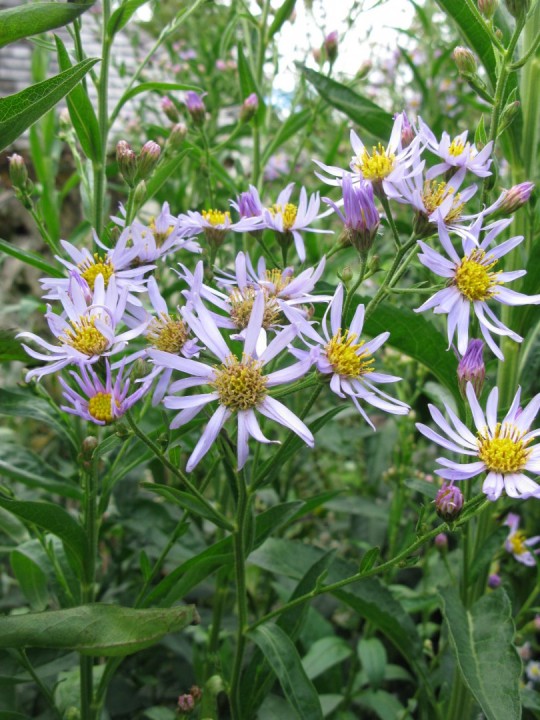
Aster tataricus - this is already thriving in the garden
Category: Seminum | Sub-Category: Perennials for Sun
Scientific Name (Genus/Species): Aster tataricus
Family: (Asteraceae)
(P) to 7′. Tatarian Aster. Siberia. Tall, long-blooming Aster with glorious, loose sprays of bold, lilac-blue daisies with yellow centres. Dense clusters of wide, lance-shaped leaves. Tough, durable plant that will thrive in a variety of conditions. No staking needed, blooms late – September and October and well worth the wait. Sun/partial shade. 3 & 6 & Δ
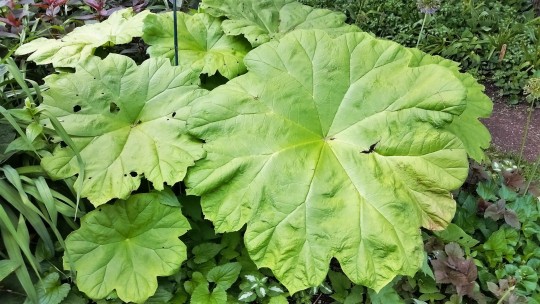
Astilboides tabularis (syn. Rodgersia tabularis) - Planted some last year, started a bunch of seeds - we'll see. 5/3/2024
Category: Seminum | Sub-Category: Woodland
Scientific Name (Genus/Species): Astilboides tabularis (syn. Rodgersia tabularis)
Family: (Saxifragaceae)
(P) to 4′. William Robinson described it best, “A bold growing and handsome species with huge peltate leaves and plumes of creamy white flowers.” Leaves reach a height of 2 to 2.5 feet. A superb plant to use as a focal point in the garden. Definitely stimulates conversation. Partial shade. 4 & T2

Astrantia major
Category: Seminum | Sub-Category: Woodland
Scientific Name (Genus/Species): Astrantia major
Family: (Apiaceae)
(P) to 2.5′. Great Masterwort. Central and eastern Europe. No garden should be without this effortless and beautiful plant. Several greenish white, often blushed pink flowerheads each arranged in a dome with a “collar” of bracts. Dense clumps of divided basal foliage. Content in the flower garden or in the woodland. Summer blooming. Great in flower arrangements, too. Sun/partial shade. PC- 4 weeks. 4 & 7 for 4 weeks, then T2

Campanula takesimana
Category: Seminum | Sub-Category: Woodland
Scientific Name (Genus/Species): Campanula takesimana 'Alba'
Family: (Campanulaceae)
(P) to 2′. Korea. An outstanding white variety of the beautiful Campanula takesimana. Leaves large in basal rosettes. Branched inflorescence of large, pendant bells on nodding stalks. Flowers are pure white with purple spotting within. Blooms July to September. Sun/partial shade. 4 & T2
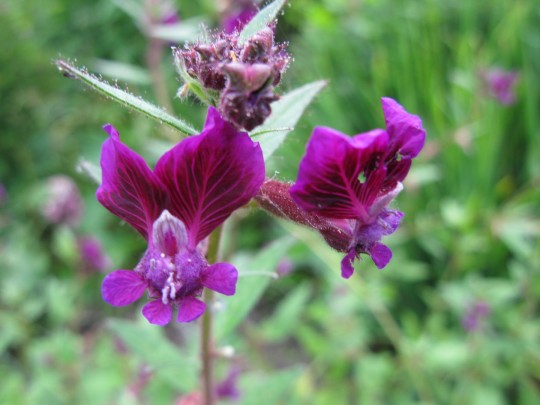
Cuphea viscosissima - Seeds already started 5/3/2024
Category: Seminum | Sub-Category: Annuals for Sun
Scientific Name (Genus/Species): Cuphea viscosissima
Family: (Lythraceae)
(A) to 20″. Blue Waxweed. A North American native and one of our most revered annuals. This non-stop summer bloomer has six deep, magenta-purple petals with the upper two being the longest and a tubular green calyx covered in fine purple hairs. An easy-care annual that requires no deadheading or staking. Very sticky stems trap unsuspecting insects. Self-sows. Sun. 4 & T3
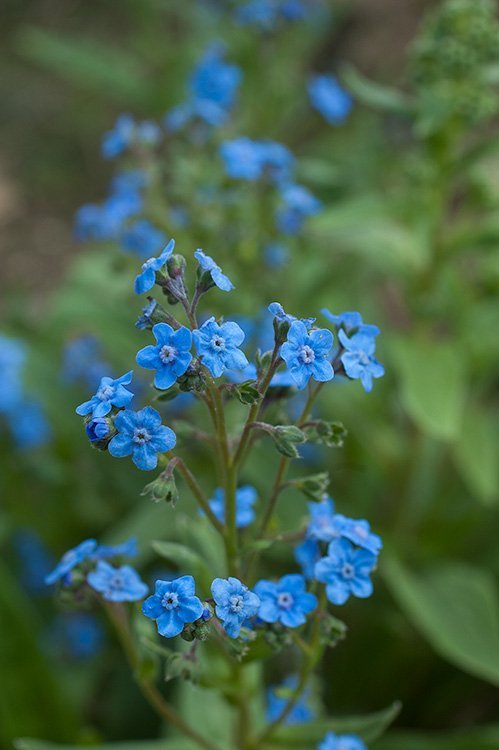
Cynoglossum amabile ‘Firmament’ - chinese forget me not
Category: Seminum | Sub-Category: Annuals for Sun
Scientific Name (Genus/Species): Cynoglossum amabile ‘Firmament’
Family: (Boraginaceae)
(A) to 2.5′. Chinese Forget-me-not. Producing all summer long a profusion of sky-blue, five-petalled flowers. Reminiscent of the Forget-me-not, only taller. Self-sows. Sun. 3, D & T2
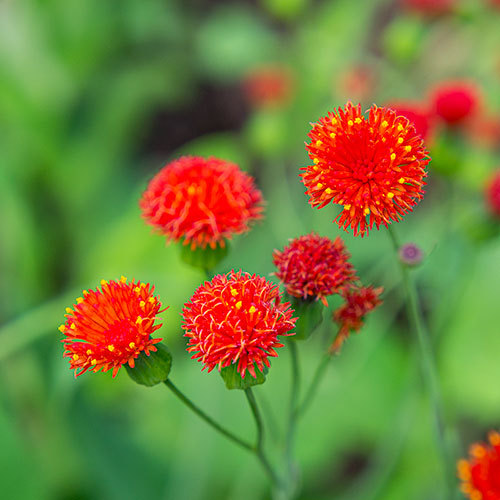
Emilia coccinea
Category: Seminum | Sub-Category: Annuals for Sun
Scientific Name (Genus/Species): Emilia coccinea
Family: (Asteraceae)
(A) to 3′. We love this selection of Tassel Flower. A native of Tropical Africa that produces a profusion of orange to scarlet, thistle-like flowers in terminal corymbs. Best if inter-planted or grown closely together. A real beauty in our Red/Orange/Yellow Bed. Sun.

Helleborus orientalis
Category: Seminum | Sub-Category: Woodland
Scientific Name (Genus/Species): Helleborus orientalis
Family: (Ranunculaceae)
(P) to 2′. Lenten Rose. Europe. Leaves are wide, dentate, glossy and evergreen. Nodding, cup-shaped, pinkish rose, five-petalled flowers have numerous cream stamens. An understated, long-blooming beauty. Early spring. Partial shade. 3 & 72° for 6 weeks, followed by 25-39° for 6-8 weeks.
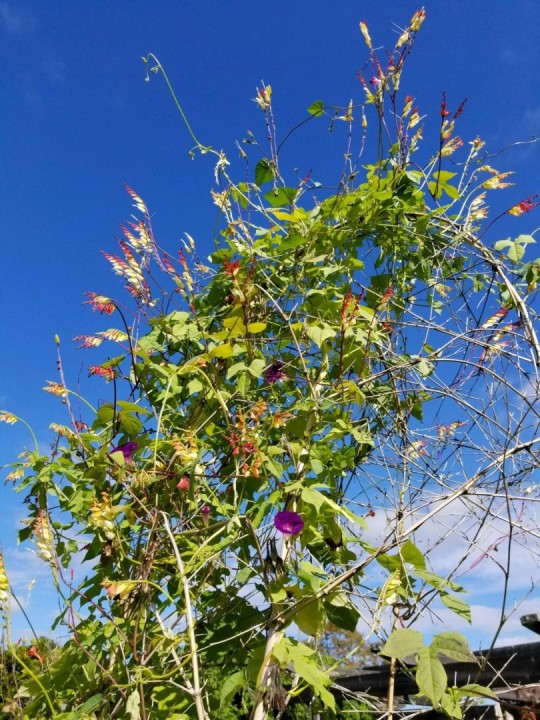
Ipomoea lobata (syn. Mina lobata) spanish flag
Category: Seminum | Sub-Category: Annuals for Sun
Scientific Name (Genus/Species): Ipomoea lobata (syn. Mina lobata)
Family: (Convolvulaceae)
Annual vine to 10′. Spanish Flag or Firecracker Vine. Mexico. An excellent, vigorous, twining vine with attractive, tri-lobed leaves and single-sided, six-inch long racemes of tubular flowers held on slender red stems. The flowers gently arc upward and outward, away from the vine, and mature from red to pale yellow, creating a gradient from the top to the base of the raceme. Blooms freely from mid to late summer until frost. The flowers are highly attractive to hummingbirds, butterflies, and other pollinators. A show-stopper on a tripod. Sun. 1, 2B, 3 & T3

Monarda punctata - Started seeds 5/3/2024
Category: Seminum | Sub-Category: Annuals for Sun
Scientific Name (Genus/Species): Monarda punctata
Family: (Lamiaceae)
(A) to 3′. Horse Mint. Native to the Great Plains of the United States. Dense whorls of pale yellow, hooded flowers spotted with purple-brown. Each whorl is surrounded by large, pink-tipped, green bracts. The narrow, toothed leaves have a grey cast. A very showy plant. Sun. 4 & T1
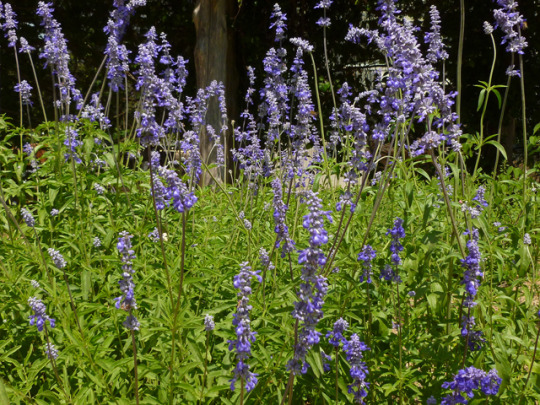
Salvia farinacea
Category: Seminum | Sub-Category: Annuals for Sun
Scientific Name (Genus/Species): Salvia farinacea
Family: (Lamiaceae)
(A) to 3′. Mealy Sage. Native to Texas and Mexico. Tubular, two-lipped, violet-blue flowers are densely congested in whorls along erect stems creating a 4″-8″ spike above the numerous grey-green, lance-shaped leaves. The common name is in reference to the mealy-white (sometimes purple) appearance of the sepals, which are covered with felted hairs. A long-bloomer. Sun/partial shade. 4 & T2
8 notes
·
View notes
Text
Kürdan Otu Nedir? Kürdan Otu Faydaları Nelerdir?
Kürdan Otu Nedir, Ammi Visnaga, Nedir ve Faydaları Nelerdir? Kürdan Otu, bilimsel adıyla Ammi visnaga, maydanozgiller familyasından gelen ve uzun yıllardır tıbbi amaçlarla kullanılan şifalı bir bitkidir. Türkiye’de de bilinen bu bitki, özellikle nefes darlığı, astım, böbrek taşları ve kalp rahatsızlıklarının tedavisinde kullanılır. Tarihi kaynaklar bitkisinin kullanımının eski Mısır’a kadar…
0 notes
Text
Healthy Living
Khella, also known as Ammi Visnaga, is a plant native to the Mediterranean region and has been used for centuries in traditional medicine. But what exactly is Khella and how is it used? What is Khella? Khella is a flowering plant that belongs to the Apiaceae family. It has been historically used in various cultures for its medicinal properties. The plant contains active compounds such as…
0 notes
Video
youtube
Ammi visnaga
music ©(P)2023 Ken Clinger
1 note
·
View note
Link
#acne#AmmiVisnagaseeds#asthma#DIYskincare#eczema#finelinesandwrinkles#gardening#Herbgarden#inflammation#khellin#musclespasms#psoriasis#radiantcomplexion#Respiratoryproblems#skincare#Traditionalmedicine
0 notes
Text


The ammi is blooming and it's cute and fills up any holes in the flowerbed, I like how it blends together with the other plants. Also some phlox "Creme Brulee"
6 notes
·
View notes
Text




황홀한 순간.
#gardening#garden#container gardening#rooftop garden#plants#flowers#winter garden#asparagus#ammi visnaga#ammi
14 notes
·
View notes
Photo



Khella - A Herb for the Heart and Respiratory Ailments
Khella (Ammi visnaga) is a member of the celery, carrot or parsley family (Apiaceae) and it has been used as a medicinal herb since ancient times for a variety of ailments.
It is known that the ancient Egyptians cultivated the plant and used it mainly for conditions related to the urinary trace system, a practice still in use today.
The dried umbels of khella are often found in markets in the Middle East and the Far East, where the flower stalks are used as toothpicks, a use which is reflected in the plan’s other common name “toothpick plant.”
In recent years scientific studies done on the herb have been mainly focused on two of its substances khellin and visnagin and their uses related to heart conditions.
To learn more about the benefits of Khella CLICK HERE: https://www.herbal-supplement-resource.com/khella-ammi-visnaga.html
#khella#visnaga#ammi visnaga#angina pectoris#herbs for asthma#asthma remedy#asthma relief#medicinal plants#healty seeds#herbal treatment#natural health#plants#healty plants#healty herbs
179 notes
·
View notes
Text

Dahlia, Zinnia, Rudbeckia and Ammi visnaga
0 notes
Text




Plant of the Day
Saturday 14 August 2021
The annual Visnaga daucoides 'Green Mist' (bishop's weed, syn. Ammi visnaga) is flowering. This plant makes mounds of finely cut foliage topped with flattened flower heads that are initially lime green and become domes of greenish-white. These flowers make a great cut flower and contrast well with other flower shapes and colours.
Jill Raggett
#Visnaga#ammi#bishop'sweed#annual#cutflowers#filler#plants#mhort#gardens#horticulture#garden#essex#writtledesign#rhshydehall#hydehall#whiteflowers#greenflowers
184 notes
·
View notes
Link
Ammi visnaga (L) is a species from Apiaceae family (Umbelliferae), it is widely used in Algeria. It is supposed to be an interesting source of phenolic compounds which can be used against biofilm growth of bacteria. Bacillus cereus, a crucial pathogenic bacterium that causes food poisoning, is known as a producer of gastrointestinal diseases. In the present work we used water, acetone, ethanol and methanol to extract phenolic compound from the plant Ammi visnaga (L). The extracts were evaluated for their antioxidant activity and their effects on planktonic cells, swarming motility and biofilm growth of Bacillus cereus isolates. The results indicate that 70% methanolic extract represent the highest amount of total phenols (176mg GAE/g), and the lowest amount was obtained with acetone extract (18, 66mg GAE/g).
0 notes

